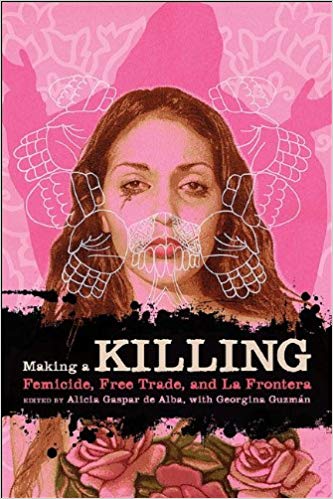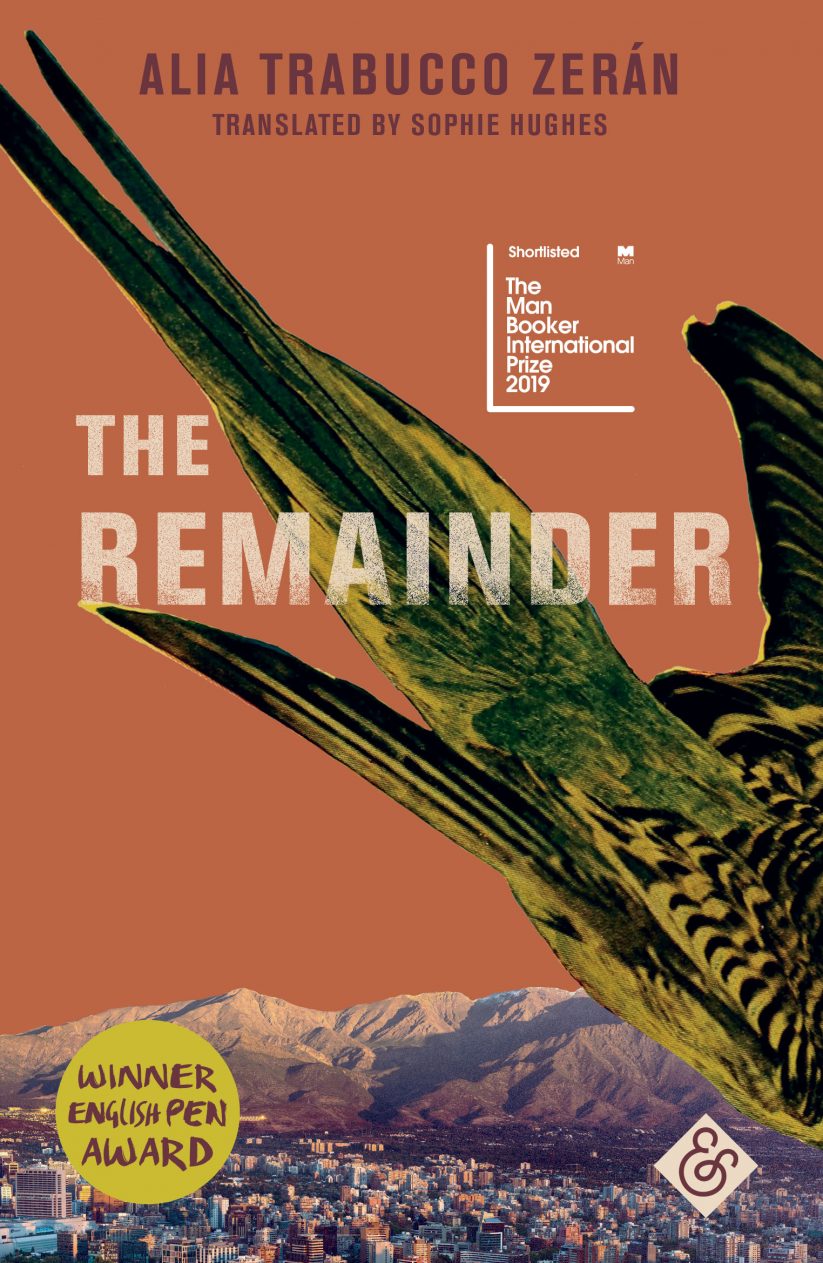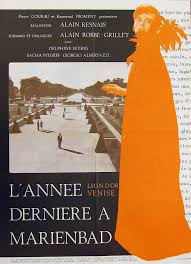Discussed in this post: 7 Books (Critique of Pure Reason; Suffer the Little Children; Making a Killing; Capital City; This Accident of Being Lost; The Remainder: and #IndianLovePoems); 2 Movies (Last Year at Marienbad and Slack Bay); 2 Documentaries (Señorita Extraviada and All This Panic).
Books
1. Critique of Pure Reason by Immanuel Kant.

It may sound counter-intuitive to those who are accustomed to imagining a hard break between “modernism” and “postmodernism” but if you want to understand the loss of objectivity and the flight of “the real” that is taken to be so emblematic of the postmodern condition, then we have to go back to this bastion of Enlightenment thinking—Kant’s Critique of Pure Reason. It is here that Kant drives a wedge between what we perceive or experience things to be, and what things actually are in and of themselves. Ultimately, Kant argues, all we can ever know is our experience of reality and not reality itself or as it exists outside of our experience thereof. To Kant, this makes reality fundamentally unknowable. Objectivity is an illusion, we are forever bounded by subjectivity, and while the Real exists we can never know it as such. Kant makes this argument in a rigourously logical manner and its effect can still be felt today. Anyway, I don’t want to say to much more about this text here because I’ll be engaging it in more detail in the piece I’m writing about ontology. Suffice to say, a critical text for understanding the development of occidental thought and culture—but also a very dry text at times.
2. Suffer the Little Children: Genocide, Indigenous Nations and the Canadian State by Tamara Starblanket.

The ongoing nature of the Canadian genocides against Nations that are indigenous to Great Turtle Island, as well as the ongoing Canadian denial of those genocides, is a pretty hot button issue these days in the Canadian media given that the national inquiry into Missing and Murdered Indigenous Women and Girls came to the repeated, resounded, and undeniable conclusion that genocide is, in fact, what is taking place. The full report is a very difficult text to read but a very critical text for ongoing efforts to fight against the massively death-dealing ways of settler colonialism, embodied as it is in Canada in the overlapping waves of capitalism, patriotism, racism, and patriarchalism. If you study Canadian history, you quickly realize that not just this one (e.g., residential schools) or that other (e.g., missing and murdered Indigenous women and girls) event qualifies as genocidal but, in fact, the entire nature of Canada’s engagement with Indigenous nations is genocide all the way down. It’s all about the elimination of Indigenous Peoples as sovereign Peoples in these territories and their incorporation into membership as an ethnic minority in and of the Canadian State. This fits the definition of genocide. To genocide, a State does not need to kill everyone from a targeted group—the State can simply annihilate that group as a distinct group (while the people themselves live on in some capacity—the call to “kill the Indian in the child” that was part of the residential school mandate is a perfect illustration of this). The Canadian State has deliberately waged a misinformation campaign about what constitutes a genocide (and, in fact, Canada both limited the definition of genocide that became binding in the UN Genocide Convention and then adopted an even more limited definition of genocide in our domestic Law). And this is part of the reason why Canadians have trouble understanding that their existence is premised upon the ongoing genocides performed by the settler colonial State.
Enter Tamara Starblanket’s extremely well-researched, impassioned, and convincing argument in Suffer the Little Children. Starblanket demonstrates how Canada has engaged (and warped and limited) genocide Laws but, despite all that, Starblanket shows how the ways in which the Canadian State has been actively involved in destroying the indigeneity within Indigenous children (from residential school to foster care – i.e., to the present day) qualify as genocide. She breaks down the ways in which the Canadian State tries to deny this and she breaks down why the Canadian State is full of shit when it does this. This is a really important book for anyone living in a settler colonial State. It couldn’t be more timely and I highly recommend it.
3. Making a Killing: Femicide, Free Trade, and La Frontera edited by Alicia Gaspar de Alba with Georgina Guzmán.

I continue my foray into some of the literature that has been produced in relation to the mass murders and mass disappearances of women that have taken place over the last few decades on the border between the occupied states of Mexico and the territories colonized by the USofA. This collection of essays explores the subject from a number of perspectives but what I appreciated about it most was that: (a) it emphasized that women in Juárez (or elsewhere on the border) are not powerless and passive but are regularly organized, organizing, knowledgeable, and fighting for themselves; and (b) that several women with grassroots community organizing experience on the border contributed to this collection of essays and raised significant questions or points of criticism about more mainstream approaches to “social justice advocacy” (or whatever). There’s a very rich conversation happening here and this collection gives a glimpse into what goes on beneath the surface in a lot of grassroots organizing and discussions. There is much to learn here—especially given the rise of Incels, MRAs, neo-fascists, and others who fantasize about violence against women in our context.
Indeed, there is much for contemporary Canadians to think about here. As mentioned above, the national inquiry into cases of Missing and Murdered Indigenous Women and Girls has now concluded and, what do you know, turns out this whole time Canada has been been committing genocide through femicide. La Frontera isn’t so far from here after all.
4. Capital City: Gentrification and the Real Estate State by Samuel Stein.

Samuel Stein is a city planner who cares more about people than he cares about profits and, although he says that there are many others like him, in my experience that makes him about as common as a two-headed sheep. However, it does give him considerable insight into the history of urban development, the rise of the neoliberal city, the drive towards gentrification, and the mass investment of global wealth in property. Along the way, he has a few things to say about Donald Trump and his family, given that the Trumps rose alongside of the neoliberal city and, in many ways, contributed to it. The book is a quick read and addresses a lot of things that have been heavily discussed and analyzed in grassroots movements fighting back against the “Real Estate State” (the impact of changes in zoning by-laws, tactics used to deterritorialize and then reterritorialize different regions, and so on) but it makes a great introduction to the topic and Stein’s particular area of expertise likely means that most folx will learn something from this text. It’s a good start for anyone trying to both understand and do something about gentrification and the ways in which the rich steal communities from the poor in order to transform those communities into wealth-producing properties.
5. This Accident of Being Lost by Leanne Betasamosake Simpson.

I think Leanne Betasamosake Simpson is writing some of the more important contemporary texts pertaining to Indigenous survival and resistance within the context of the Canadian occupation of Turtle Island (and, as many have pointed out given the ongoing genocidal activity of the Canadian State, very often survival is resistance). As We Have Always Done and Dancing on Our Turtle’s Back should be required readings here. However, in terms of my own tastes and interests, I find her short stories and poetry collections (like This Accident of Being Lost) are a little more hit-and-miss (and, yes, my own rootedness in other traditions and identities is a huge factor here … as well as my personal struggle with the whole genre of short stories). I am curious, however, to see how this collection compares to Islands of Decolonial Love.
6. The Remainder by Alia Trabucco Zerán.

My first foray into Chilean literature left me scratching my head a bit. There is no doubt that Alia Zerán has mastered various techniques that the literati look for in writers but, just as when I’m watching movies, I’m always looking for something more than a masterful demonstration of technique. I’m not sure that The Remainder got there for me.
Chile, since 9/11 (1973), has had a long and brutal and often eliminated and buried history. It is interesting, then, to see Zerán’s characters skate across the surface of something they know is much deeper but who, themselves, may not be certain of what lies in those depths and who, in fact, may not wish to look down. This subtext, of a partially known, partially deliberately forgotten, partially completely unknown and unknowable history, I enjoyed very much. Not everyone desires to know what lies beneath and, even for many of those who do, what lies beneath will always remain lost and inscrutable. In this regard, The Remainder is aptly named. Characters are shaped by forces well outside the boundaries of their own lives, are influenced by traumas that run for generations, only get tiny glimpses of the stories that have formed them… and then are making their way, whatever way they can, as best as they can, from there.
7. #IndianLovePoems by Tenille K. Campbell.

Tenille Campbell is a brilliant poet. Her passions, whether they be love or lust or laughter or rage, is infectious. She has me rethinking eroticism and the courage it takes to write such personal erotic texts (and this inspired me to post my Second Meditation on Love). If you’re also interested in exploring these things, then this is highly recommended reading.
Movies
1. Last Year at Marienbad (1961) directed by Alain Resnais.

In the initial stage of his career, Alain Resnais was somewhat obsessed with exploring the theme of memory. It’s no surprise, then, that he was approached about making the film that became Nuit et Brouillard (Night and Fog), which was released in 1955 and which became one of the first, most influential, and most enduring documentaries about the Holocaust. Night and Fog is a short film but it a long-lasting impact on me. So, when I learned that Last Year at Marienbad was actually Resnais’s adaptation of The Invention of Morel by Adolfo Bioy Casares (which I read and loved recently), I was intrigued and wondered how in the world that novel could be translated into film.
However, it becomes quickly apparent that Resnais deploys certain broad structural elements, motifs, tones, and moods from Casares and then creates his own entirely different, but equally compelling and strikingly good, meditation upon memory. In particular, the film explores how men deal with a particular form of trauma—i.e., the trauma of doing something unspeakable, something horrendous, and then being overwhelmed by the shame that this produces. In this situation, men are wont to circle around and around and around the trauma they themselves have produced in themselves in order to try and incorporate it into a different narrative that removes the shame they feel—but the shame remains a powerful force that continually drives them back out of the narrative they are attempting to tell themselves about themselves. For this reason, they need others to tell the lie they want to believe back to them as though it is a truth. Hence, the protagonist in the film, continually asks, begs, and demands that the female lead “Remember!” But what he needs her to remember is something that did not happen and he needs her to remember this so that he can forget what did happen. And this reversal is, I think, at the root of why so many people lie. They lie, first and foremost, to be able to deceive themselves and they only deceive others because this is the most convincing route to self-deception. In other words, it’s not so much that I want to lie to you as I want you to tell my lie back to me while believing that it’s the truth—so that I can also believe that it’s the truth. All of this is, in my opinion, very well explored in this film. I enjoyed it at a number of levels. Recommended viewing.
2. Slack Bay (2016) directed by Bruno Dumont.

Christian, a product of aristocratic in-breeding in Northern France repeatedly yells out (in English), “We know what to do but we do not do!” but the meaning of this enigmatic statement is never entirely clear to the viewer. Who is the “we”? What is it that this we knows to do but does not do? And what is the relation of this refrain to the broader themes of this film? What exactly is going on here? That last question appears to be one frequently raised by reviewers of Slack Bay (Ma Loute), especially when the slapstick world of the (quite often literally and physically) twisted wealthy and (more metaphorically and cannibalistically) twisted poor is suddenly ruptured by the miraculous. Yet what does this miracle accomplish? Very little indeed. These people are pretty far gone. And I suppose one could say something pithy about how oppression (in this case, the hoarding of wealth) dehumanizes both the oppressor and the oppressed, but I can’t help but feel like Dumont is having a laugh with all the viewers who take all the films so seriously and who use those films to say serious things. In my own life, I have often appreciated the ways in which a crass, stupid, or low-brow joke can reveal a great deal about the pretensions of the company in which one finds oneself and, watching Slack Bay, I felt like this tactic was being used back on me. Yet, like the buffoons in the film who continue to spout their regular nonsense, even while a man floats in the sky, I and other reviewers continue to write our clownishly clever reviews. Well played, Dumont, well played.
(Here, then, is one possible reading of Christian’s repeated exclamation: what we, the reviewers, the critics, the viewers, need to do is the same thing that the characters in the film need to do—that is, take ourselves far less seriously.)
Documentaries
1. Señorita Extraviada (2002) directed by Lourdes Portillo.

I was first introduced to the hundreds of murdered and thousands of missing women of Ciudad Juárez through Roberto Bolaño’s 2666. The litany of femicides he describes there is overwhelming and exhausting and I was appalled to learn that what he was describing was not at all fictional. I came to that knowledge rather late in the game and, at a time when hardly anyone was aware of what was going on in Juárez, Lourdes Portillo, a feminist and activist from Juárez, was spreading the word and making this ground-breaking documentary. For many people, it was their first exposure to the mixture of sweatshops, serial killers, misogyny, and utterly corrupt and brutal cops that exist at the El Paso-Juárez border. As usual, particularly in the context of multifaceted (intersectional or, better yet, diffractive) oppression, is is the grassroots that lead the way. There is much about this film that is not easy to watch. But, yeah, there is much about our world that is not easy to live in.
2. All This Panic (2017) directed by Jenny Gage.

Filmed in New York over a three-year period, All this Panic follows a group of girls as they go through high school and what comes after. It’s an intimate series of vignettes that just manages to feel more like a narrative than a collage and it received a lot a praise from the critics. I was pretty excited about it because, yeah, I’m a bit of a sucker for a well-told coming of age story. However, watching this documentary so closely after viewing Minding the Gap and Eighth Grade may have tempered my experience of it. It’s good—and the ways in which the ebbs and flows of relationships between the (all female) protagonists are explored (whether as sisters or as friends) is really, really good and a distinctive feature of the film—but it didn’t leave me thinking much more than “yeah, that was good. I enjoyed that.” But, don’t get me wrong, I’ll be looking out for what Jenny Gage does next.